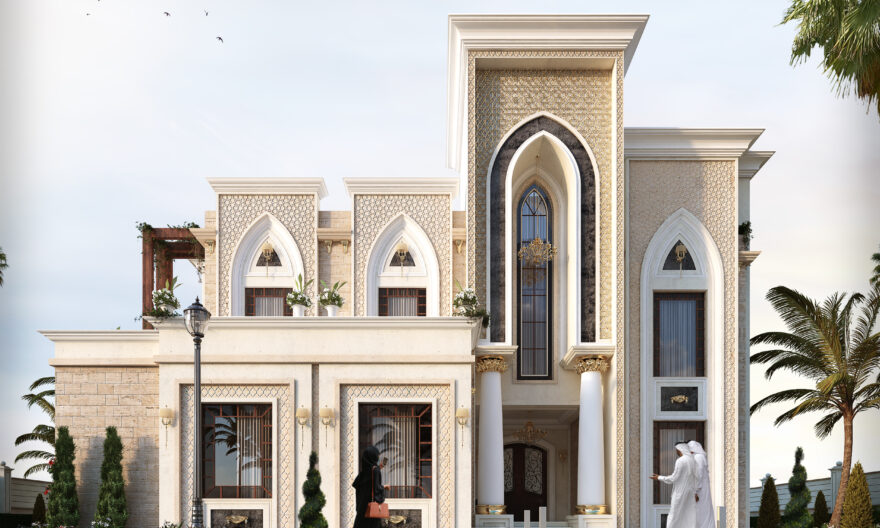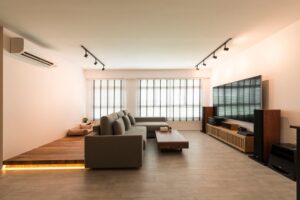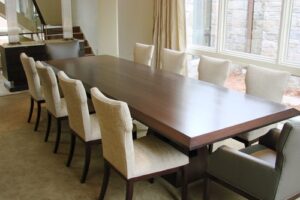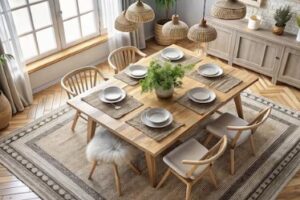
Turning your house into a peaceful, faith-aligned space takes more than decor. A modern Islamic home reflects values, nurtures prayer, and supports a calm daily routine. While every family lives differently, the guiding principles remain similar—function, modesty, purpose, and harmony. A well-planned layout and a thoughtful blend of tradition and modern touches help create a living space that uplifts both spirit and comfort.
Today, families seek a style that combines faith with form. Concepts like modern Islamic house design balance aesthetics with spiritual meaning. Whether you own a compact flat or a larger landed house, certain changes can shift the mood and direction of your home.
Understanding the Essence of an Islamic Home
Before diving into furniture or colours, consider what defines a home guided by Islamic values. The house serves as a place for worship, rest, family bonding, and reflection. It also provides a safe and pure environment where values shape actions.
Simplicity stands at the heart of Islamic design. The Prophet Muhammad (PBUH) encouraged clean, open spaces and discouraged clutter. Spaces that breathe allow both physical movement and mental clarity.
The function also matters. Prayer should be easy, wudu should feel natural, and privacy should stay protected. The design must support worship and interaction while reducing distractions.
Layout That Supports Faith and Function
A purposeful floor plan encourages ease of prayer, cleanliness, and reflection. Consider the direction of the qiblah when setting up rooms. Allocate a quiet corner or room for salah. This prayer space should feel calm and unblocked by furniture or distractions.
Try to keep communal areas open and flexible. Wide walkways and breathable layouts suit gatherings and keep the energy flowing.
Design tip: Orient your prayer area in a quiet zone of the home, away from screens, noise, or frequent traffic.
Simplicity in Style and Decoration
Islamic tradition promotes moderation. Avoid crowded wall art or excessive decorative items. Let each element in the room serve a clear purpose. Leave blank spaces on walls. Allow the furniture to follow clean lines and avoid over-decoration.
A home inspired by modern Muslim house design simple principles often includes natural wood tones, earth-coloured rugs, and a mix of light and shadow. These choices ground the space while maintaining visual warmth.
Decor tip: Choose subtle calligraphy art or geometric patterns instead of loud designs. Balance light and shadow using natural materials.
Incorporating Prayer Spaces
Prayer stands at the core of an Islamic home. Creating a dedicated space for it anchors the daily rhythm of worship. The area doesn’t need grandeur—just cleanliness, silence, and respectful decor.
Include a prayer mat, a shelf for the Qur’an and books, and perhaps a light source for evening prayers. Use neutral tones to encourage focus. Avoid mirrors or televisions facing the prayer space. If the home allows, include a small sink nearby for easy wudu.
In flats with limited room, carve out a small prayer corner in the bedroom or hallway.
Use of Islamic Art and Symbolism
Calligraphy plays a central role in Islamic art. Verses from the Qur’an or the names of Allah bring reflection into daily life. Instead of painting full walls, consider framed prints with soft tones.
Avoid displaying images of people or animals, as this may distract from the spiritual intent of the room. Opt for geometry, symmetry, and muted contrast to reflect traditional Islamic design with modern form.
Design tip: One large piece of calligraphy on a living room wall makes more impact than several small, scattered ones.
Embracing Natural Light and Calm Colours
Light in Islamic culture symbolises purity and presence. Let sunlight reach the main areas. Use sheer curtains to soften glare while welcoming brightness. Natural light also improves mental health and energy.
Stick to a calm colour palette. Beige, soft grey, olive green, and muted terracotta give rooms a grounded, timeless look. Avoid neon or overly bright tones. The mood should invite rest and reflection.
If you paint one wall with a stronger colour, balance it by keeping the rest soft and light.
Balancing Privacy and Hospitality
Hospitality holds great value in Islam. Homes should feel warm and welcoming to guests. However, this should not come at the cost of family privacy.
Design the home to maintain separate zones. If possible, create two seating areas—one for guests and one for the family. Use curtains, sliding doors, or plants as visual barriers where permanent walls are not feasible.
Privacy tip: Bedrooms should stay shielded from view when the main door opens. Arrange furniture to create indirect sight lines.
Organising Shared Family Spaces
Shared areas build connections. Living rooms, dining spaces, and kitchens should feel inviting. Keep shelves neat and seating comfortable. Use soft lighting during evenings to ease transitions from activity to rest.
Choose furniture that supports group conversation rather than focusing on a television. Add low bookshelves for Islamic stories, books, and family games. Consider one wall with a simple calendar or family goal list.
When a house supports shared time, it reflects unity and purpose.
Including a Wudu-Friendly Bathroom
Performing wudu easily helps maintain prayer discipline. Adjust your bathroom to fit this need. Use non-slip flooring, install a hose spray, and keep a towel nearby. If space allows, install a small stool or bench to ease movement.
Keep soaps and supplies tidy. Use subtle scents rather than sharp air fresheners. Choose calm lighting. This makes the space feel respectful and fit for a ritual act.
Wudu tip: Place a small prayer rug outside the bathroom as a gentle reminder for salah.
Combining Modern Taste with Islamic Values
It is possible to stay stylish without losing tradition. Many homeowners fear that religious design feels old-fashioned. However, trends today often align with Islamic values—clean lines, less clutter, and meaningful spaces.
Here’s a simple comparison of traditional Islamic design and how it merges with modern elements:
Islamic Design Fusion Table
A short breakdown of how tradition meets modern style in practical ways:
| Element | Traditional Feature | Modern Interpretation |
| Prayer Space | Carpet and low seating | Neutral-toned mat, focused quiet corner |
| Wall Art | Arabic calligraphy | Minimalist framed script with soft edges |
| Light | Lanterns, open windows | Natural sunlight, warm LED lighting |
| Colours | Earth tones, greens, and blues | Muted tones with texture contrast |
| Layout | Separate male/female zones | Flexible zones using curtains or dividers |
This table shows how old and new can blend without conflict. It reflects how a house can honour values while meeting present-day living needs.
Final Reflections
A home built on Islamic values feels grounded. It supports prayer, encourages simplicity, and builds harmony. You don’t need expensive furniture or complex designs. You need intention, balance, and care.
By following the principles of modern Islamic house design, families can create homes that welcome both guests and guidance. Spaces that allow quiet moments, shared meals, and focused prayer brings barakah into daily life.
Start small. Shift one space. Add one meaningful object. Reduce one distraction. Over time, your house will reflect both style and soul—a balance found in every modern Muslim house design simple in purpose, yet rich in meaning.
For More Information : Medina Design & Interiors




